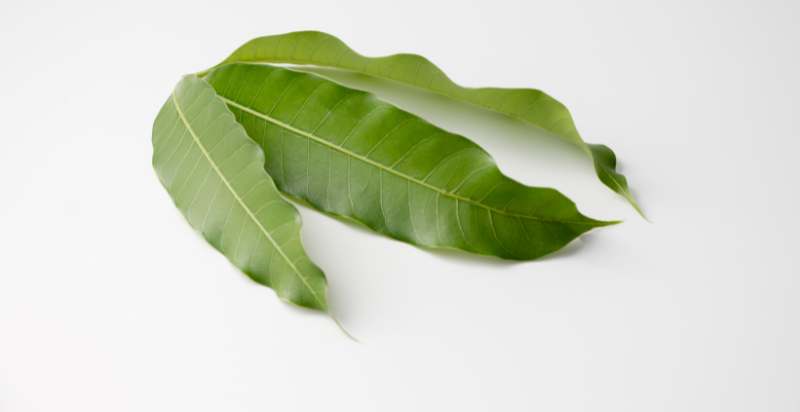Mango leaves are one of the most popular and versatile ingredients in many traditional dishes across Asia. They are a valuable source of vitamins, minerals, and antioxidants that can benefit your health in many ways.
The leaves are also known for their medicinal properties and have been used to treat various ailments such as diabetes, fever, asthma, diarrhea, constipation, and more. In this article, we will explore the nutritional benefits of mango leaves and how they can be used in cooking to boost your health.
Description / Taste:
Mango leaves have an earthy, green flavor and can be eaten fresh or dried. They are slightly bitter when consumed raw, but the taste mellows out with cooking. The leaves of a mango tree can measure up to 4 inches in length and 2 inches wide and contain very small amounts of essential oils.
Seasons / Availability:
Mango leaves are available year-round but can be harder to find during winter. They can usually be purchased in specialty stores or online retailers as fresh herbs, dried powder, and tea.

Nutritional Benefits:
Mango leaves contain various essential vitamins and minerals, including vitamins A, C, E, K, B6, and folate. Additionally, they are rich in dietary fiber, potassium, and calcium. The leaves also provide a good source of antioxidants that can help fight diseases such as cancer and heart disease.
The leaves can also help regulate blood sugar levels and aid digestion due to their high fiber content. Furthermore, these leaves are known for their anti-inflammatory properties, which can help reduce pain and swelling.
Health Benefits:
Mango leaves have been used in traditional medicine for centuries to treat various conditions. The antioxidants present in the leaves are thought to be responsible for their positive effects on the body. These can help reduce inflammation, improve cardiovascular health, regulate blood sugar levels, and reduce oxidative stress. They may also help protect against cancer and promote healthy eyesight. Additionally, these leaves are believed to help relieve symptoms of respiratory problems such as asthma and bronchitis.
Cooking with Mango Leaves:
Mango leaves can be added to various dishes for an added nutritional boost. They can be used in soups, curries, and stews for an extra flavor kick. They can also be boiled and consumed as a tea to help improve digestion and boost immunity.
These leaves are also commonly used in Ayurveda medicines due to their medicinal properties. Mango leaf extract is believed to have anti-diabetes properties, while the leaf juice may help reduce inflammation and ease joint pain.
Conclusion:
Mango leaves are a nutritious ingredient that can provide many health benefits. Not only are they packed with vitamins and minerals, but they also contain powerful antioxidants that can help fight off various diseases. Additionally, they can be used in various dishes to add flavor and an extra nutritional boost. Finally, these are also used in Ayurveda medicines due to their medicinal properties. These are an excellent ingredient that can help improve your health and well-being.
Mango leaves are an excellent ingredient that can help improve your health and well-being. Adding them to your diet will benefit you in more ways than one! So remember to stock up on this amazing superfood the next time you go grocery shopping!
- Everything You Wanted to Know About Red Tamarillos - June 2, 2025
- A Guide to Tulips: Everything You Need to Know & More… - June 2, 2025
- Guanabana: Description, Flavor, Benefits, And Uses - May 27, 2025

2 thoughts on “Mango Leaves Benefits And Uses In Cooking”
Comments are closed.